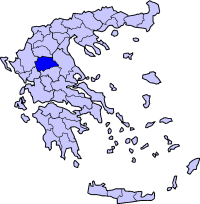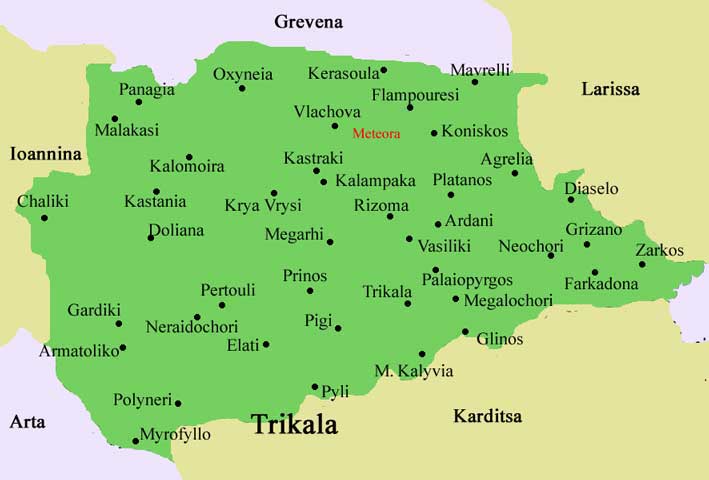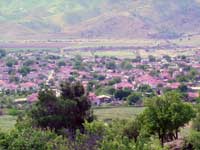|
|
Zarko or Zarkos (gr. ) is a village of the Farkadona municipality in the east part of the Trikala Prefecture, Greece. Population 1498 (2001). Zarkos is also a mountain (c. 730 m) in Thessaly
There is also loads of speculation regarding the source of its current name. Some people say that many roe deer (zarkadia, Greek: ζαρκάδια) used to live around the area, while others believe that this is actually the name (Zarko) of a Yugoslavian General who helped in a way to liberate the whole area. The fact is that it all started thousands of years ago as archaeological excavations in the wider area brought up buildings of a prehistoric settlement, probably of around 6500-5800 BC. During the Turkish occupation years Zarko was one of the main centres of the wider Thessaly area. There was more than a 5000 population and there was a Greek, a Turkish and a Jewish area. Zarko's people were mainly working in the fields producing cotton and they were quite capable of producing fabrics of the highest quality; in the late 19th century the 'Zarkina pania' (cotton fabrics of Zarko) were well-known in the area. Zarkos was under Ottoman occupation until the liberation of much Thessaly as well as the modern south-eastern Arta Prefecture in 1881. Now-days you can still see the Turkish and the Greek forts that were build in the 19th century in order to define the borders between the 2 countries. After World War II and the Greek Civil War, the population steadily declined as residents moved to larger towns and cities. Many people also left as immigrants to countries like Germany and the United States. In the mid 50’s Zarko was the very first village in the area to start modernising the traditional way of agriculture. It introduced the first ‘fabric made water-pipes’ that were used in order to water the cotton fields, as well as bringing in the area the first tractors. Electricity and automobiles arrived in the 1960s, it was linked with pavement in the late-20th century while television arrived in the 1970s. Internet and computers arrived in the late-1990s. A special note needs to be done regarding the 12th century St. John’s monastery which is located around 2 kilometres north of Zarkos. Deserted for many years it is now reconstructed and occupied with nuns.
 |
||||||||||||||||
|
|




